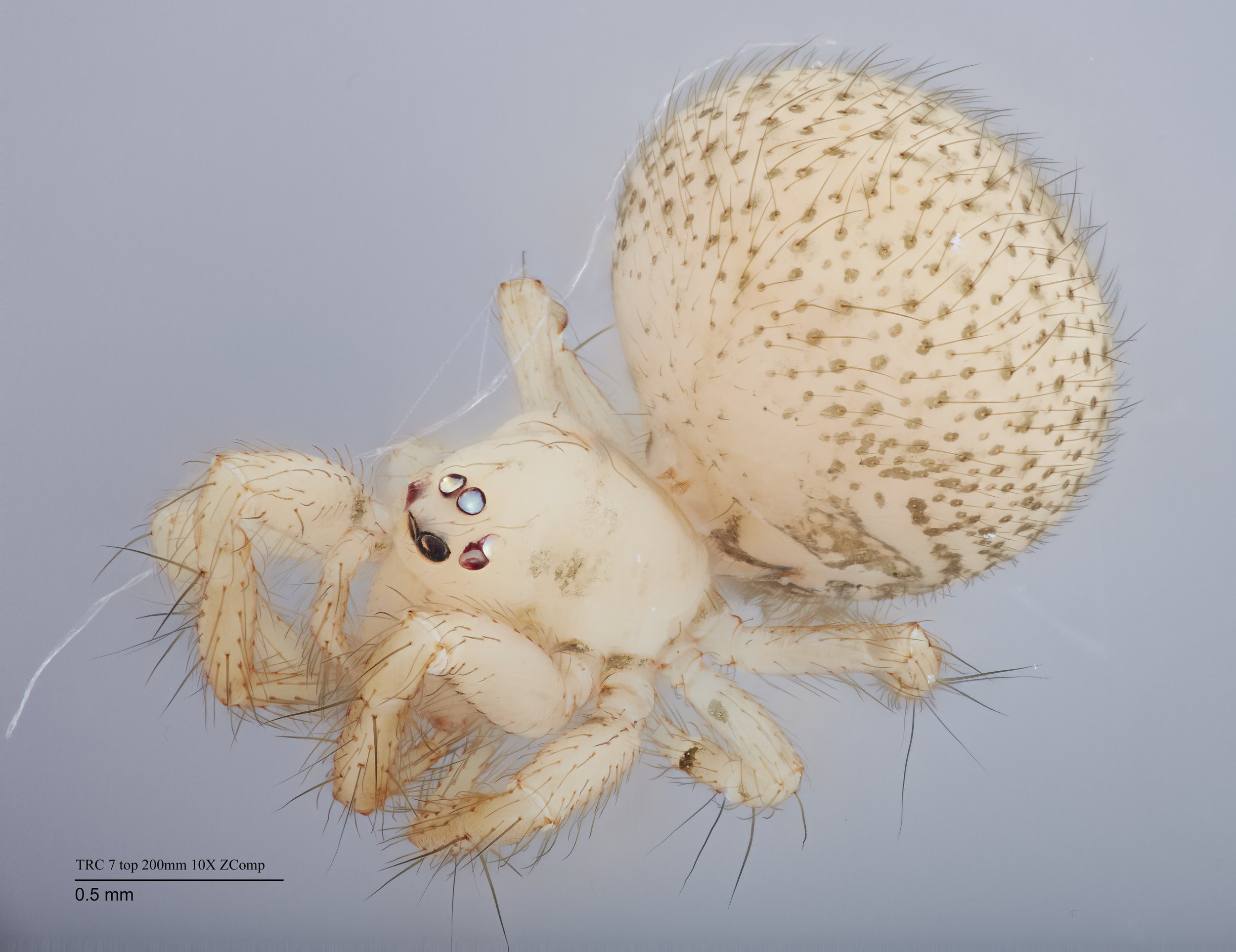Slingshot spiders
spiders that build stretchy, silk catapults!
Image credits: Lawrence E. Reeves
In nature, certain extreme living systems employ springs and latches to amplify their power for achieving ultrafast accelerations that exceed millions of g-forces in nanoseconds.
Slingshot spider (Theridiosomatidae) catch their prey by catapulting their webs, and themselves, at over 130 Gs. These spiders achieve these impressive accelerations by slowly stretching their webs like a rubber band and then rapidly releasing them, flinging the web at passing flying insects. Although scientists have known about these spiders since the 1930s, the underlying mechanisms of their spring-actuated webs were not understood.
Our quest to understand their amazing movements took us to the Peruvian Amazon rainforest. We used high-speed cameras in the field recording at over 3000 frames per second to capture the release and movement of the web. We then developed a mathematical model to further uncover the fundamental biophysical principles of the hunting behavior of these extraordinary arachnids.
This project has been featured by NPR, NSF, and more.
Major questions
What is the speed and acceleration of a slingshot spider?
How can slingshot spiders launch themselves at extreme accelerations?
How do slingshot spiders control their repeated launching and arrest?
What we’ve discovered
Slingshot spiders achieve ultrafast speeds and accelerations.
Slingshot spiders (Theridiosoma) can reach a peak speed of 4.2 m/s and an acceleration of 130 g— making them the fastest whole-body movement in a biological system. They use their pedipalps (“hands”) to hold onto the deformed web structure while awaiting their prey.
Slingshot spiders use their web as a spring to catapult themselves at extreme speeds.
Slingshot spiders load elastic energy by deforming their webs into a cone-like structure, creating a powerful spring with one of the highest power densities in natural materials.
Slingshot spiders also rapidly halt their ultrafast movements within a few milliseconds.
Slingshot spiders stop their movements using a specialized ‘tension line’ and air drag. We found the special conical web architecture permits it to act both as an elastic spring and a shock absorber, enhancing prey capture successes while avoiding web breakage and spider injury.
David vs. Goliath. Using these 3D webs, slingshot spiders catch prey much larger than them. How they sense prey in mid-air remains unknown.
Read the papers
Slingshot spiders build tensed, underdamped webs for ultrafast launches and speedy halts. Journal of Comparative Physiology A (2021).
Ultrafast launch of slingshot spiders using conical silk webs. Current Biology (2020).
A tunable, simplified model for biological latch mediated spring actuated systems. Integrative Organismal Biology (2022).
The principles of cascading power limits in small, fast biological and engineered systems. Science (2018).
What others are saying
“We humans always think we’re the best at everything, and in the natural world, those spiders are doing something that’s pretty difficult. It just opens up a myriad of areas of research in evolution, neuroscience, materials science, and human engineering.”















